When Grace Yoon used to pass by groups of seniors practicing qigong in New York City’s Chinatown, she never gave them a second glance. “I thought, ‘Qigong is for elderly people who can’t move as quickly but still want to get some exercise,’” says Yoon, 33.
So when her doctor recommended she try it for stress management nine months ago, Yoon was skeptical. But as a Korean-American, Yoon was also intimately familiar with the concept of qi, the energy of life that flows throughout the body and the starring element in the ancient energy practice that is qigong. In fact, the business she was in the process of starting—the arduous endeavor from which her stress was stemming—was a Korean wellness herbal line called Qi Alchemy.
With the pressures of entrepreneurship taking their toll on her in the form of indigestion, muscle tension, and anxiety, she decided to give qigong a try. Nine months later, Yoon is hooked, showing up to her West Village qigong studio once a week for what she calls her “meditative workout”.
“The slowness of the movement helps me with my patience, and the Daoist principles are similar to those in kundalini yoga, which I’d started practicing just before qigong. They both use breathwork and meditation to revitalize internal energy,” she says. “Qigong helps me take my internal stressors and convert them into energy and vitality.”
Even though the movements are slow—exquisitely so, sometimes—“it’s actually very, very hard,” she says, “especially in New York City where everything is so fast-moving. I know I’ll leave class feeling a sense of internal peace and balance.”
Qigong: Moving Energy Intentionally
Qi is all around us—it’s the breath of life that flows through every cell in the universe. Qigong (pronounced “chee-gung”) means “working with the qi” and is an ancient system of energy medicine consisting of slow, gentle movements and meditation. As with acupuncture, tui na (therapeutic massage), and so many other forms of Eastern energy work, its goal is to stimulate the flow of qi throughout the body. Practitioners focus on becoming aware of the energy surrounding them, then follow a carefully orchestrated series of slow, intentional movements designed to move that energy in specific ways.
Part of qigong’s beauty lies in its marriage of movement with thought and intention, says acupuncture physician Dava Michelson, a doctor of medical qigong who has studied, practiced, and taught qigong for two decades.
“If someone simply raises her arms up over her head, that’s a calisthenic movement,” she explains, “but the moment you imagine an intention—that you’re gathering the energy of the heavens, the planets, the sun, and the moon and moving that down through crown chakra and through body—it’s not just a calisthenic movement; you’re harnessing and cultivating energy.” Because qi is all around us as well as within us, qigong, Michelson says, is “a way of connecting ourselves to nature and to the universe.”
Related: What Is Nature-Deficit Disorder?
Posture is of utmost importance in the practice, says Kenneth Cohen, noted qigong teacher and author of The Way of Qigong: The Art and Science of Chinese Energy Healing. “The first and most important principle of qigong is relaxation, and in order to be relaxed, you must have good alignment,” he says.
In addition to ensuring one’s weight is evenly distributed through both legs and the core, there’s a concept called sinking, or chen, in which you feel as if everything—your shoulders, your abdomen, your pelvis—is sinking into the ground. “There’s a distinct sensation of all the tissues in the body flowing downward, like you’re developing deep roots into the earth,” Cohen explains. At the same time, “you’re growing tall and your head is reaching up, so there’s a wonderful feeling of spaciousness.”
If you were to take a beginner qigong session, you might be asked to start with a whole-body breathing exercise. Standing with your legs hip-width apart, knees soft, and arms at your sides, you would prepare to move with some slow, deep abdominal breathing. Next, your arms would rise up together in front of you, slowly making their way overhead as you inhale. At the top, they would separate and gently sweep down on their respective sides as you’d exhale.
Bringing in the mindful element, your instructor might ask you to feel as if you are drawing qi, or energy, from your feet up to your head on the inhale. That qi could bring with it a sense of warmth or tingling. On the exhale, you would breathe out any stagnant qi. The entire routine would be repeated a few times, then reversed.
There are also walking moves like Mo Ca Bu (“the grinding step”), which features slow, methodical steps forward and backward, precisely shifting your weight into one leg at a time and touching the ball of each foot to the ground as you shift. (It was named so because the crescent-like movement of the legs is reminiscent of the action of grinding ink in Chinese calligraphy.) Other moves include Rolling the Ball (imagining your qi as a solid ball you hold between your hands) and the Double Helix, in which the hands are used to create a figure-eight pattern, representative of infinity.
If this sounds similar to Tai Chi (Tai ji Quan), you’re correct; Tai Chi is a style of qigong.
Treating Disease with Medical Qigong
There are several forms of qigong, including Daoist, Buddhist, martial, and medical, explains Louis Komjathy, PhD, founding co-director and senior teacher of the Daoist Foundation and associate professor of theology and religious studies at University of San Diego. Most forms typically operate off of the traditional Chinese medicine meridian system of 12 primary meridians and eight extraordinary vessels. (Meridians are energy pathways located throughout the body, corresponding to particular organs.)
This philosophy is critical for understanding medical qigong. Along with acupuncture, herbal medicine, and medical massage, it is one of the four primary branches of Traditional Chinese Medicine but perhaps the least well-known.
It’s believed that poor diet, injury, surgery, suppression of emotions, and aging can cause disruptions in the flow of qi. Like acupuncture, medical qigong treats people by facilitating movement of qi through the meridians. Medical qigong practitioners are trained to feel differences in energy based on vibration or temperatures they feel emanating from a patient, either through touch and palpation or from a distance, Michelson explains.
Because qi can pass through clothing, patients remain clothed during medical qigong sessions, typically lying face-up on the treatment table. In most cases, the treatment is touch-free, similar to reiki. You may feel various sensations as the doctor moves and directs qi through your body, including warmth, coolness, tingling, vibration, or twitching, according to the International College of Medical Qigong. These sensations are stagnant energy being released.
You might also feel a flood or release of emotions, including unpleasant ones that have been kept suppressed. This emotional release following a treatment is believed to be beneficial to both psychological and physiological well-being.
Related: A Meditation for Energy
Medical qigong is popular in China, where it’s employed at several “medicine-less hospitals”. Qigong has been or is currently being studied for its potential impact on a massive array of health conditions, including high blood pressure,
type 2 diabetes, depression, and early intervention in children with autism.
One area that holds much promise is oncology, specifically in helping cancer patients manage the side effects of treatment. Research out of University of Texas MD Anderson Cancer Center and published in the journal Cancer linked qigong with reduced rates of depression and increased quality of life in women undergoing treatment for breast cancer. Other research suggests qigong helps ease fatigue in men undergoing treatment for prostate cancer.
Possible theories behind qigong’s beneficial impact on cancer include improved immunological functioning, increased blood circulation and increased elasticity of blood vessels, and improved pain tolerance.
In a world where the majority of doctor’s visits are due to stress or a stress-related conditions, Cohen and other experts believe qigong has the promise to improve a range of health issues from diabetes to dementia when used as a complementary or integrative therapy. (Though not a substitute for necessary medical care, emphasizes Cohen, who was the first person to teach qigong in U.S. medical schools.) A yoga practitioner himself, he urges yogis to give this slower yet like-minded practice a try.
“Spiritually, they’re very similar, with an emphasis on inner stillness and inner quiet. The mental effects—resilience, less depression, relaxation—are pretty similar, too,” he says. “But I think qigong is an exquisite tool of self-regulation, [giving us control of] aspects of our physiology generally considered beyond our control, like blood pressure, oxygen delivery to cells, and peripheral and cerebral blood flow.”
Try Qigong Yourself
Intimidated by the precise physicality of the movements? Don’t be. “Thirty percent of qigong is learning the technical skills, but the remaining 70 percent is about nurturing and learning how to practice self-care. We’re finding out how we can take care of ourselves, slow down, and do less,” Cohen says.
Below, Michelson describes a powerful qigong breathing exercise that’s suitable for beginners. “Ultimately, you want to open and expand your lower abdomen in all directions,” she says. As you inhale, breathe in vital life energy. “As you exhale, release the turbid qi. Picture yourself condensing the vital qi denser and brighter in your lower dantian with every exhalation.”
1. Lying down, place your hands on your lower abdomen, which is known as your lower dantian, or energy field. Imagine there’s a ball inside that fills with air as you inhale and deflates as you exhale. As you breathe in, direct your breath into the lower abdomen and feel your belly rise. Then feel it contract as you exhale.
2. After a few breaths like this, slip your hands beneath your lower back and breathe again, this time feeling your back expand into your hands. (Your abdomen with still expand upward as well; the point is to feel your lower dantian expanding in all directions.)
3. Repeat with your hands on the sides of your lower belly.
4. Try practicing this for about 10 minutes, then take a break.
You can also try mini versions of this during times of stress, like when stuck in traffic or before starting a stressful conversation, Michelson adds.
Photo by Stephanie Gross
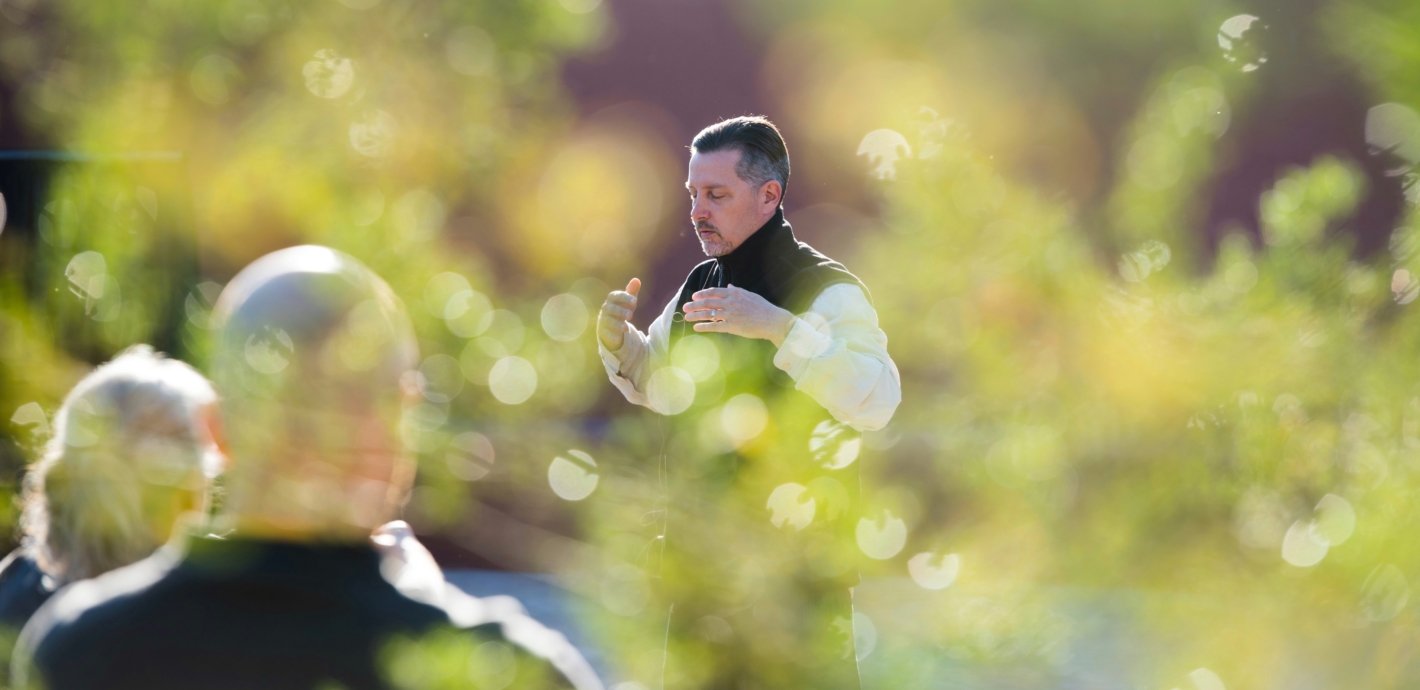

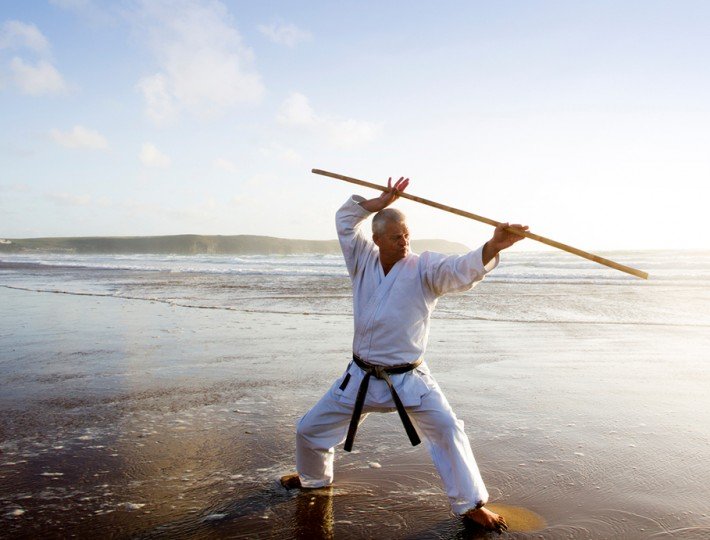
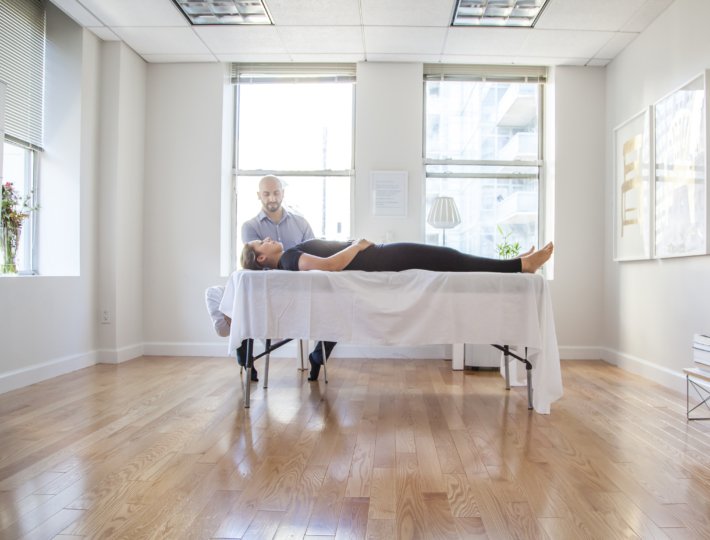


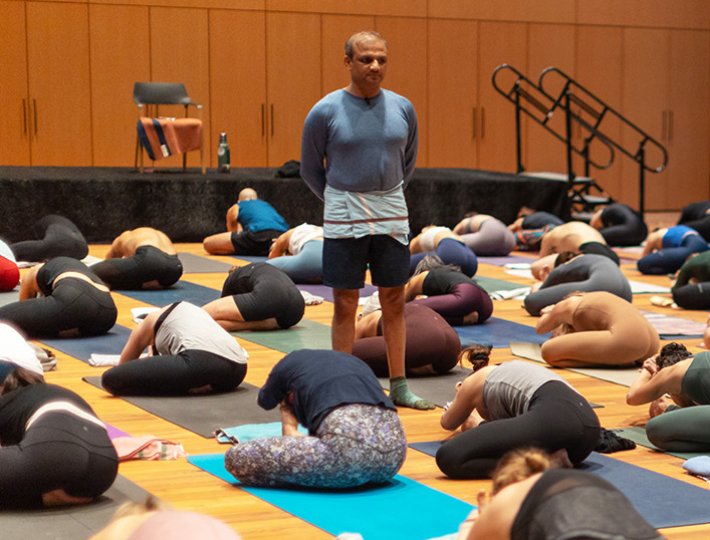
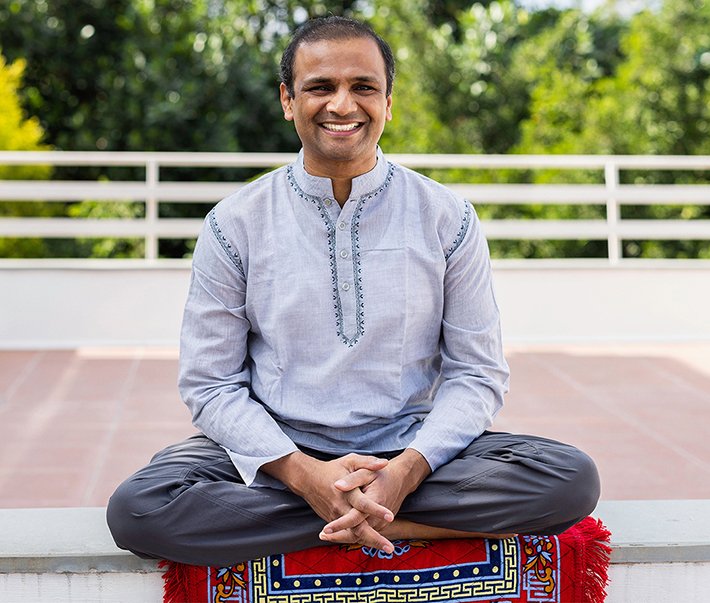
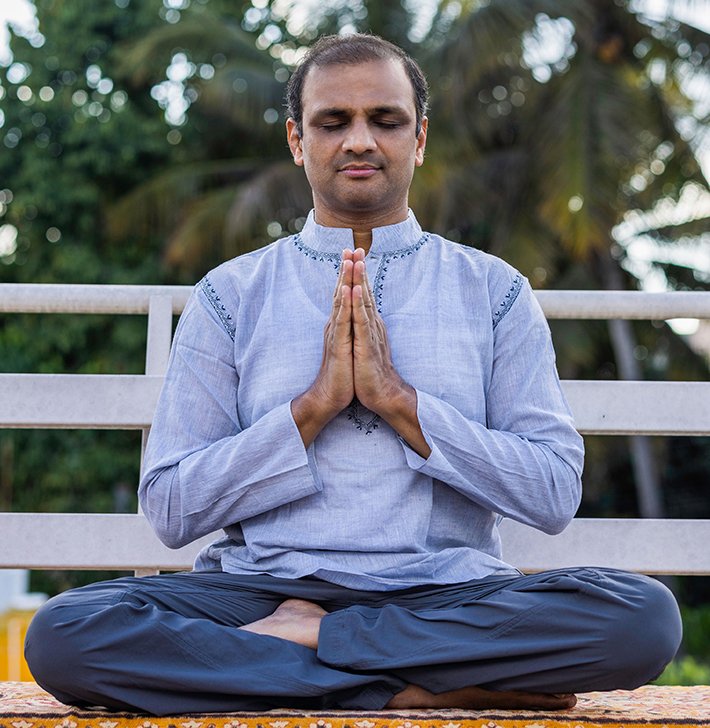



Comments (0)